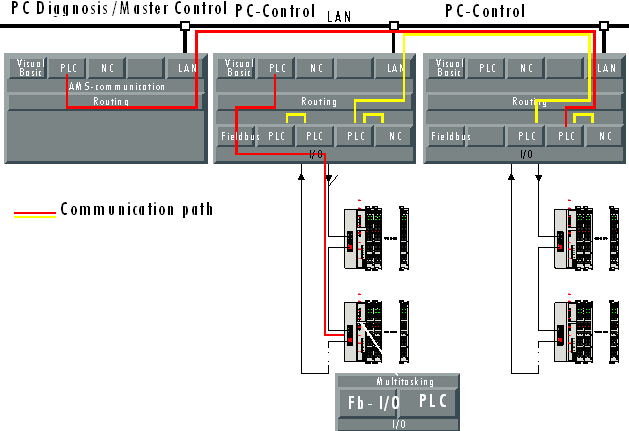Connection by message routing
"Remote" connection is system-immanent
TwinCAT's software devices can be distributed to equipment depending on requirements: TwinCAT PLC programs are capable of running on PCs and of Beckhoff Bus Controllers (mini-PLC). A message router manages and distributes all messages in the system and via TCP/IP links. The internal protocol is based on TCP and operates in accordance with the "Automation Message Specification" AMS. PC systems can be linked in this way- Bus Controllers are linked via serial interfaces and field buses (Beckhoff Lightbus, Profibus DP). Thus, all TwinCAT server and client programs are able to exchange commands and data, to send messages and to communicate status information etc..
Worldwide access
As NT uses the TCP/IP services, this exchange of data can take place throughout the world and so a centralized and decentralized architecture can be realized for all automation tasks (see sketch).
Hierarchical control architecture: centralised or decentralised

A PC is determined by means of its TCP/IP address and the message router's "AMS Net Identifier":

Message routing via TCP/IPCOM PortField bus
Thanks to the message routing system, centralized or decentralized systems can be addressed for both PC systems and bus controllers. The transmission circuits consist of TCP/IP links, serial channels, or field bus systems. The system offers scalable communication performance and timeouts for monitoring communication events.